How to Plan and Prepare For Your Winter Camping Trip
What to know (and pack) for a cold-weather camping trip, so you’re prepared for the frigid temperatures and snow and will be cozy and comfortable all night.
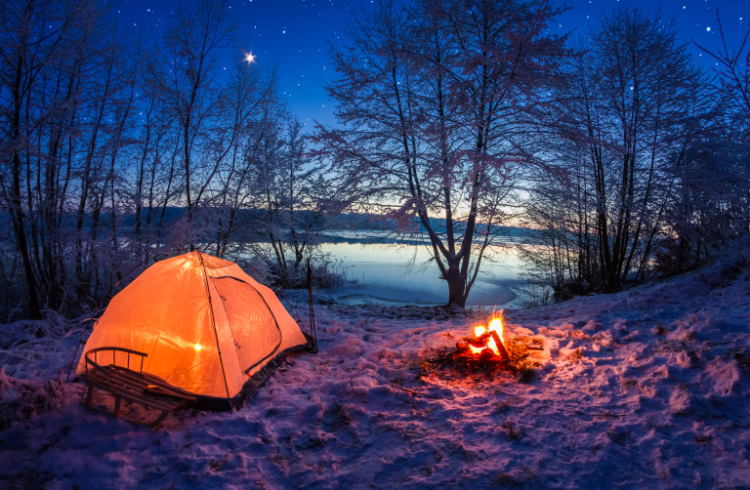 Photo © Getty Images / Shaiith
Photo © Getty Images / Shaiith
Come wintertime, far fewer hikers hit the trails and even fewer camp overnight, making winter an especially serene time to camp. And while frigid temperatures can be deadly – and it's essential to take additional precautions when camping in the cold, with proper planning and packing – even relatively inexperienced campers can have a great, safe time in the snow.
- Planning your winter camping trip
- Preparing for your trip
- Choosing the right tent and sleeping bag
- Essential gear for winter camping
Planning your winter camping trip
Most importantly, unless you are very experienced, you'll want to ease into winter camping and avoid the most extreme weather. Instead of planning your first trip when it will be windy, snowy, and below zero, get your feet wet (metaphorically, not literally) on a warm winter night where no snow or strong winds are expected. For your first foray, try just one night instead of committing to a multi-night adventure. If you have a car, set up camp near your vehicle, so you have options should the weather take a turn for the worst.
About five years ago, a friend convinced me to join him for one night of winter camping, and, despite his extensive experience and even more extensive stash of cold-weather gear, I was terrified. I was sure we'd freeze to death, so he agreed to a single night of car camping at a state park just an hour from his house in Milwaukee so we could bail should I freak out in the middle of the night. We went on a relatively warm night (around 30°F/-1°C) with only about an inch of snowfall accumulating overnight. Surprisingly, I was sufficiently cozy and woke up feeling like a hardcore wilderness woman.
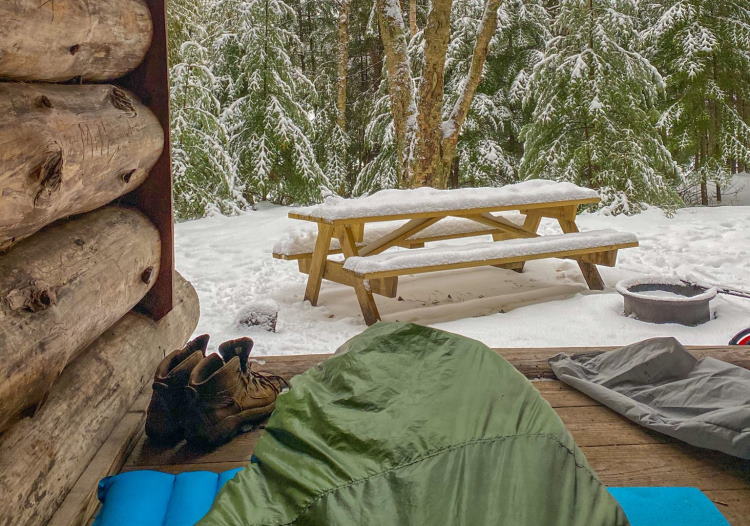
On another winter camping trip, a couple of years ago (this time in New York's Adirondack Mountains), I knew I didn't have the right gear for the 0°F (-17°C) evening we were expecting, so a friend lent me his down booties, mittens, and pants to sleep in, which were supremely warm, cozy, and comfy. If you're just getting into winter camping (or any camping, really), instead of dropping a ton of money on new gear, it may be worth asking friends to see if they have anything you can borrow. Some outfitters also rent equipment, or you could seek out local environmental or conservation clubs, which may have a lending program for members. This way, you can see what gear you like and if you even like winter camping enough to invest in your own gear.
Preparing for your trip
If you're entirely new to camping, it would be wise to take in as much information as possible before hitting the trails. Before my first solo camping trip in Cuba (far from a winter wonderland), I had joined more experienced friends on camping trips from Mexico to Massachusetts. By the time I finally felt comfortable enough to go winter camping, I had spent dozens of nights camping in warmer weather, but I relied heavily on friends to teach me how to pack and dress for the cold and use a camp stove.
If you don't have experienced friends to guide you, you could seek out wilderness, survival, camping, and general outdoorsy classes at places such as the Audubon Center, REI, or your local parks department.
Planning an epic camping trip? Find out how travel insurance can cover lost or stolen baggage, sudden illness, or other mishaps.
Choosing the right tent and sleeping bag
The type of gear you'll need for winter camping will vary a bit based on your climate and the current weather. For instance, is it a clear and mild 35°F (1°C) night or a below-zero snowstorm? If the weather is mild, you may be able to get by with a three-season tent, but if it is very cold, windy, and snowy, you'll need a tent specifically designed for that weather. Keep in mind that the three-season rating isn't so much about the tent's ability to protect you from the cold (that's more the job of the sleeping bag), but rather, its ability to handle the weight of snow piling up on top of it.
The same goes for sleeping bags. Your summer bag won't cut it when the temperatures plummet, and because the weather can often feel colder than it is (and dip even lower than what was forecast), you'll want to bring a bag rated at least 15°F colder than the temperature you expect. If there's excess room in your bag where cold air can sneak in, stuff some clothing there to fill the gaps.
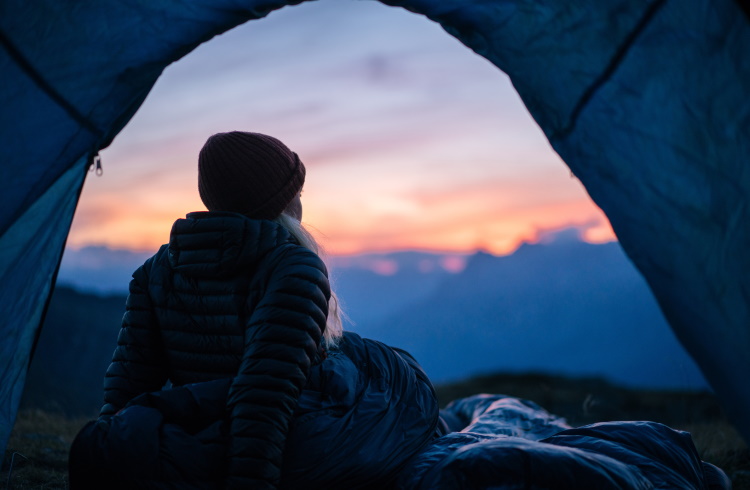
Essential gear for winter camping
Regardless of the weather or how many days you'll be out there, you'll still need essentials like a headlamp, change of clothes, waterproof jacket, first aid kit, etc. If you're only heading out for one night, you may get away with packing hot food in insulated containers (oatmeal, chili, pasta, etc.), but if you are out there several nights, then you'll likely need to cook your food.
Confirm in advance whether you can have a campfire where you'll be camping, as some areas don't allow it. If you plan to build a fire, consider bringing fire-starter materials to make it easier to get the flame going. Bring a small camp stove with fuel if you're not allowed to build a fire (or question your ability to create one).
If you're camping in an area that doesn't have toilets (or that has bathrooms but closes them during the winter), keep in mind that part of keeping nature pristine involves proper poop management. Packing your poop out is the best, and sometimes the only, option when the ground is too frozen to dig into the ground, but if you're not into packing poo and can hollow out a hole, bring a shovel to dig a "cathole." Holes should be 6-8 inches (15-20cm) deep and at least 200ft (60m) from your camp and any trails or water sources. Also, carry out all used toilet paper, which can be easily stored in low-tech, re-sealable plastic bags.
To get you started, here's an essential winter camping gear checklist:
- Tent
- Sleeping
- Sleeping pad or mat
- Pillow (could also use rolled-up clothes)
- Stove with fuel (for multi-day trips)
- Food
- Cooking utensils
- Water purification device
- Hydration pack or water bottles
- Rain jacket
- Hat
- Two pairs of gloves
- Spare socks and undergarments
- A change of clothes to sleep in
- Waterproof boots
- Sunglasses
- Headlamp
- Knife
- Dry bag
- First aid kit (band-aids, gauze, moleskin, disinfectant)
- Toothbrush and toothpaste
- Sunscreen
- Prescription medications
- Topo map
- Compass
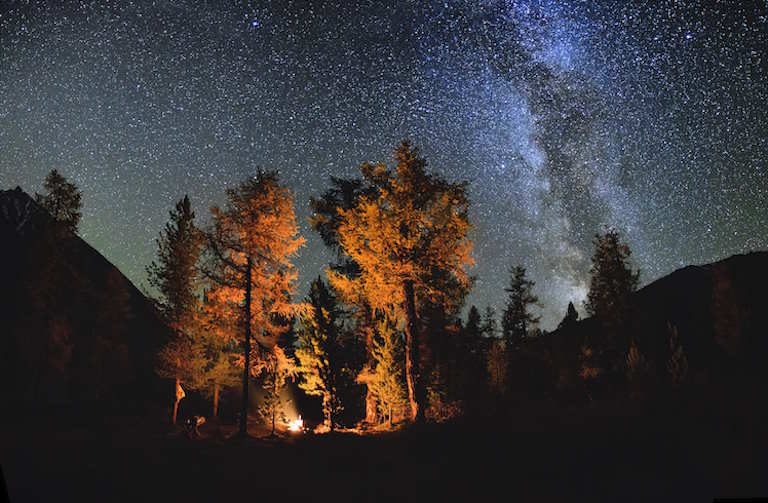
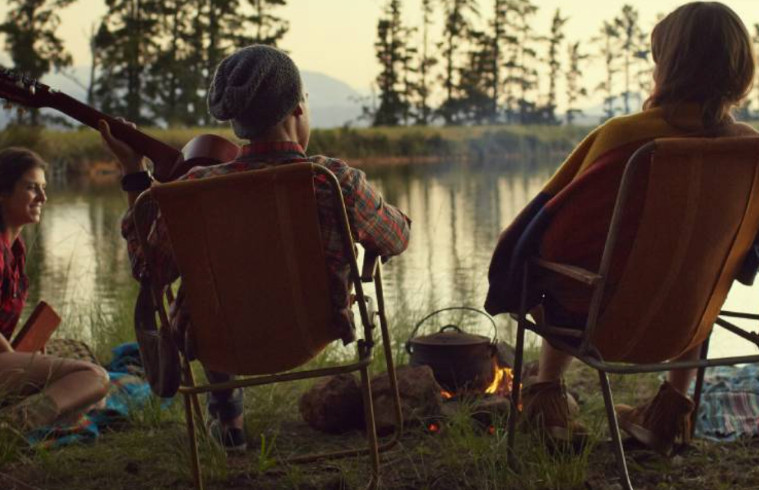
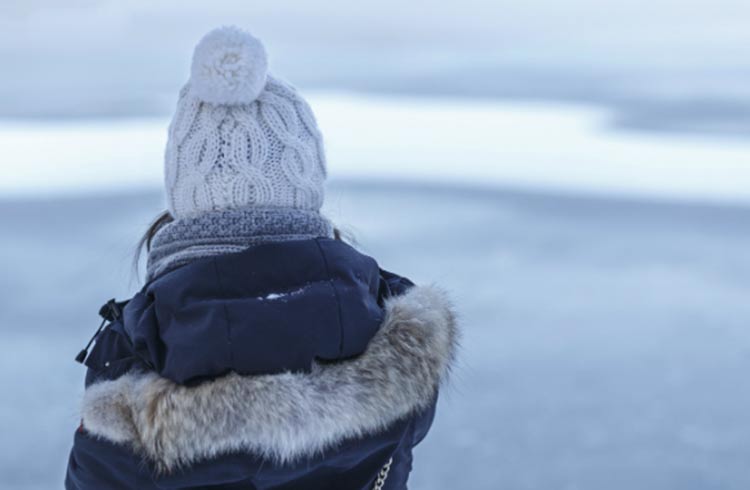
No Comments